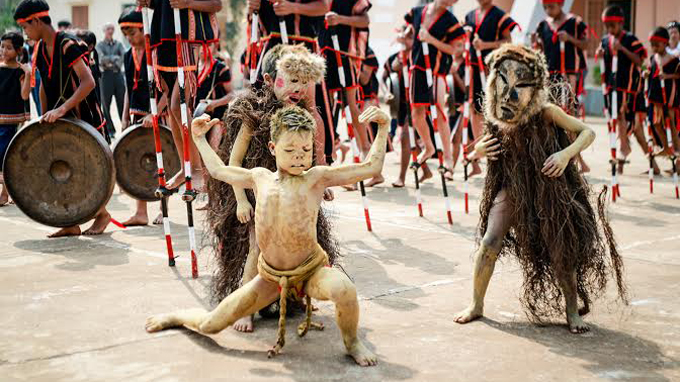A century-old village called Kon So Lal in the Central Highlands province of Gia Lai, which bears the unique cultural identity of Ba Na ethnic minority, including clown dances, has been deserted and seen deterioration for the past 11 years.
Located in Chu Pah district, the village is now home to only four elderly people, as most households have moved to a new one, some 3km away. The new village boasts a much more modern look with brick houses in which electricity and running water is available for their convenience.
The old village, which boasts more than 50 cottages on stilts, is now inhabited by only village patriarch Chung, Chil, Koch and Dyoi, all in their 70s and 80s.
The sparsely populated village is surrounded by verdant, shady fruit trees and centered by an imposing communal house, which is shaped like an upside down large boat.
“I don’t know exactly when the Kon So Lal village was first built. The village has been there since my grandparents were young. It’s a great pity that we have to abandon it, but we have no other options,” said Dinh Suk, nearly 60, chair of Ha Tay commune People’s Committee.
The village only gets livened up during festive times, with one of its highlights being the captivating clown dances.
Unlike in Jrai ethnic people’s “bo ma” (building homes for the deceased) fest, which only boasts “pram” (puppet), all fests of Ba Na people including “bo ma”, and celebrations of good crops or victories feature “potual” (clown), who perform the “xoang prim” (clown dance).
“Potual” each wears a layer of light yellow clay all over their body and a tail. They also put on loincloths woven by “long mun” roots or ragged sacks.
According to locals, the appearance of “potual” eases the grief felt by the deceased’s loved ones, while adding to villagers’ joys over bumper crops, and is thus integral to the fests.


















































